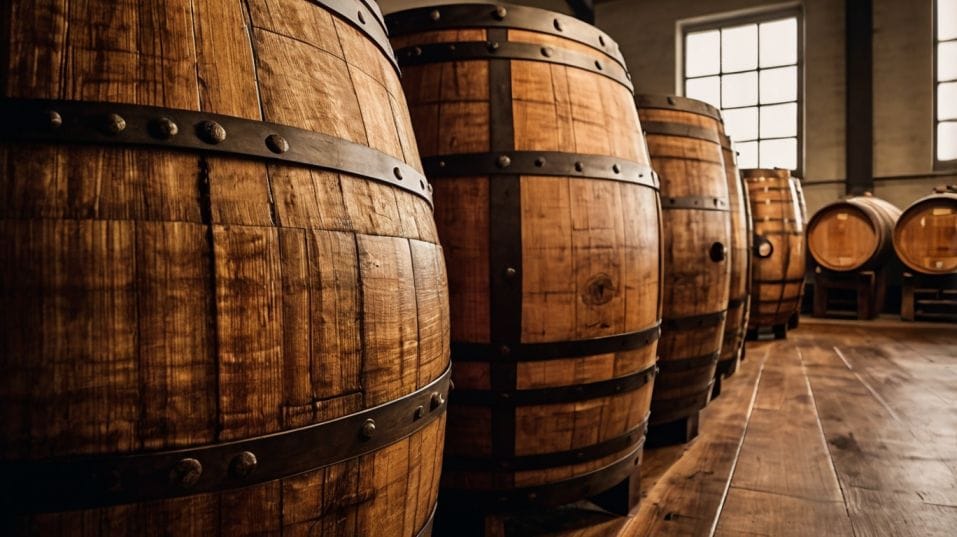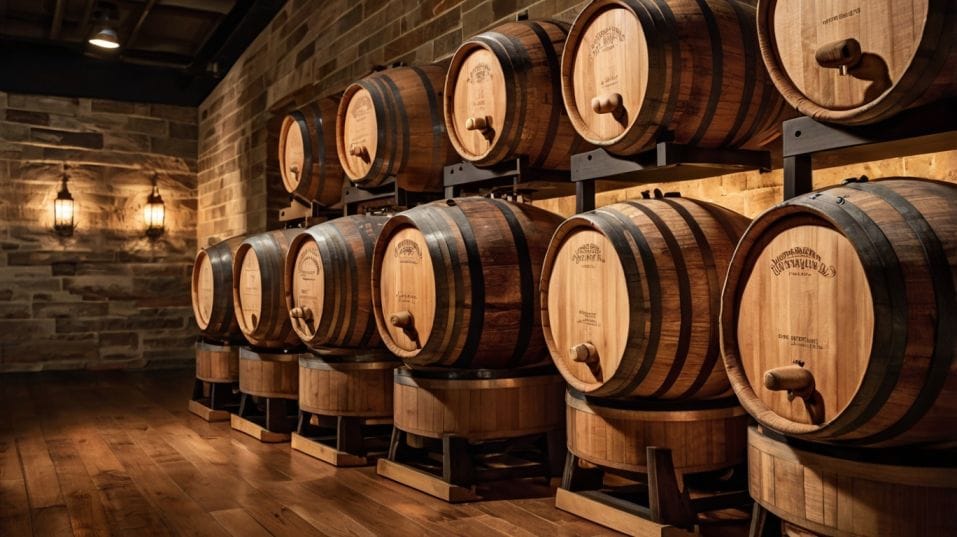Why Some Whiskey Tastes Oaky (And Some Doesn’t)
Learn why whiskey tastes oaky—or doesn’t. Master the role of barrels, aging, and distiller choices to sip, collect, and explore with confidence.

Why does one whiskey taste bold and woody while another barely hints at oak? If you're new to the world of whiskey, this question unlocks everything. Oak isn't just a flavor—it’s a force that transforms clear spirit into something rich and layered.
Whether you crave big, bold sips or subtle complexity, understanding oak helps you decode labels, predict flavor, and taste with confidence. Let’s break down how this humble wood drives the soul of your whiskey.
Oak Isn’t a Flavor. It’s a Force.
Oak is not just one flavor. It’s a force that reshapes the spirit from raw grain to something rich, complex, and often unexpected.
Nearly every aged whiskey owes a huge part of its flavor—and color—to time spent in oak barrels. This wood isn’t just a storage container. It’s an active ingredient.
When distillers talk about oak, they’re usually talking about one of two species: American white oak (Quercus alba) or European oak (Quercus robur).
These trees grow slowly, soak up minerals from the soil, and develop dense, flavorful wood that’s uniquely suited to aging alcohol. But the species makes a difference in the glass.
- American oak tends to be sweeter and softer—expect vanilla, caramel, coconut, and gentle spice.
- European oak leans dry and bold—bringing dark chocolate, dried fruit, clove, and often astringent tannins.
The wood grain itself, how the tree was seasoned, and how the barrel was constructed all play a part. It’s not just the type of oak—it’s what was done with it before your whiskey ever touched it.

Char, Toast, and the Heat Behind the Flavor
Once a barrel is built, it gets fired. Literally. Charring and toasting are what transform raw oak into a flavor machine.
Toasting vs. Charring
- Toasting gently bakes the inside of the barrel, coaxing out sugars and setting the stage for soft spice, roasted nuts, and layered sweetness.
- Charring takes it further, igniting the surface of the staves. That charred layer acts like a filter for harsh compounds—and adds bold notes like smoke, charred wood, and burnt sugar.
Different distillers use different levels of char—from light toast to alligator skin char (which cracks like reptile scales).
Heavier char usually means more caramelized flavor, more vanilla, and a deeper oak punch. Bourbon producers often go hard on the char to draw big, fast flavor from new oak barrels.
If you’re tasting notes of marshmallow, toffee, or heavy smoke, you’re tasting the barrel’s fire.
New vs. Used Barrels: Who’s in Charge?
In the U.S., by law, bourbon must be aged in new, charred oak barrels. That gives American whiskey its signature intensity—those bold, sweet, oaky notes hit fast and hard.
Scotch, Irish, and Japanese whiskeys usually take a different path. They’re often aged in used barrels, usually ones that previously held bourbon or sherry.
These second-fill casks still give flavor, but they’re gentler and slower about it. That lets the character of the distillate—the grain, the fermentation, the still—shine through more clearly.
Used casks aren’t neutral. They just don’t dominate. They also introduce flavors from whatever came before. A sherry cask might bring in raisin, fig, or spice.
A former wine barrel could add cherry, plum, or even tannins. But the oak's own voice? Softer, smoother, more of a supporting actor.
So if you prefer whiskey where the oak is dialed back, start paying attention to labels that mention second-fill or refill casks. If you're chasing full-throttle wood, bourbon is your playground.
Time Matters—But It’s Not Everything
It’s easy to assume that more aging means more oak. That’s true—to a point. A 3-year-old whiskey will pick up some surface notes.
A 10- or 12-year-old will show deeper integration. At 18 or 20 years, things can get serious: dried fruit, leather, cigar box, old library kind of serious.
Why Time Alone Doesn’t Tell the Story
But time alone doesn’t tell you how oaky a whiskey will taste. A young bourbon aged in a fresh, heavily charred barrel might taste more aggressively oaky than a 15-year-old Scotch aged in a refill hogshead.
The barrel's size, age, and previous use—all of that changes how time expresses itself. Smaller barrels have more surface area, which means faster extraction.
Hotter climates—like Texas or Kentucky—cause whiskey to expand into and contract out of the wood more rapidly, speeding up flavor development.
In cooler regions like Scotland or Japan, the process is slower and more gradual, with more nuance and less brute force. In short: aging is a factor. But it’s not a shortcut to understanding oak.
Climate and Warehouse Strategy: Silent Influencers
Where and how a whiskey is stored makes a massive difference in how the oak shows up.
American distillers often stack barrels in tall, multi-story warehouses. The top floors get hot—really hot. Whiskey up there matures faster, picking up more oak, more caramel, more spice.
Barrels on the lower floors mature slower and softer. Some distilleries blend barrels from different levels to create a balanced flavor.
In contrast, many Scotch and Irish distilleries age their barrels in cool, damp warehouses with stone walls and dirt floors. The conditions are consistent, and the oak influence unfolds slowly and gently.
The result? More subtle wood notes, longer integration, and usually less aggressive oakiness.
So even two whiskeys aged the same number of years can show completely different oak profiles based purely on storage strategy and climate.
Distiller’s Intent: Who’s Driving the Flavor?
Some distillers build whiskey to spotlight the oak. Others deliberately keep it in the background. Every choice along the way—from distillation to blending to bottling—affects how the oak comes through.
Decisions That Shape Oak Expression
- Cask Strength: Higher proof means more wood compounds are left intact. Oak hits harder, with more tannin, spice, and structure.
- Dilution: Lower proof can soften oak’s edges but also bring hidden layers into focus.
- Filtration: Chill-filtered whiskeys can lose some texture and oil that carries oak richness.
- Finishing: Some whiskeys are moved into a second cask (often wine, rum, or port barrels) after initial aging. This can either tame or amplify oak notes depending on the cask type.
Pay attention to these details when reading labels. They’re not marketing fluff—they’re clues to how the whiskey will taste.
Final Thoughts
If you’re serious about flavor, understanding oak is non-negotiable. It’s not just “woody” or “not woody.” Oak is a spectrum of textures, flavors, and intensities—shaped by species, treatment, barrel age, climate, and the distiller’s hand.
Want to get better at spotting it? Taste whiskeys aged in different oak types. Compare new-barrel bourbon to refill-cask Scotch.
Pick up a bottle finished in wine or sherry casks and note what’s from the oak and what’s from the finish. Drink with intention. Build your palate on purpose. Start chasing oak—not hype.




